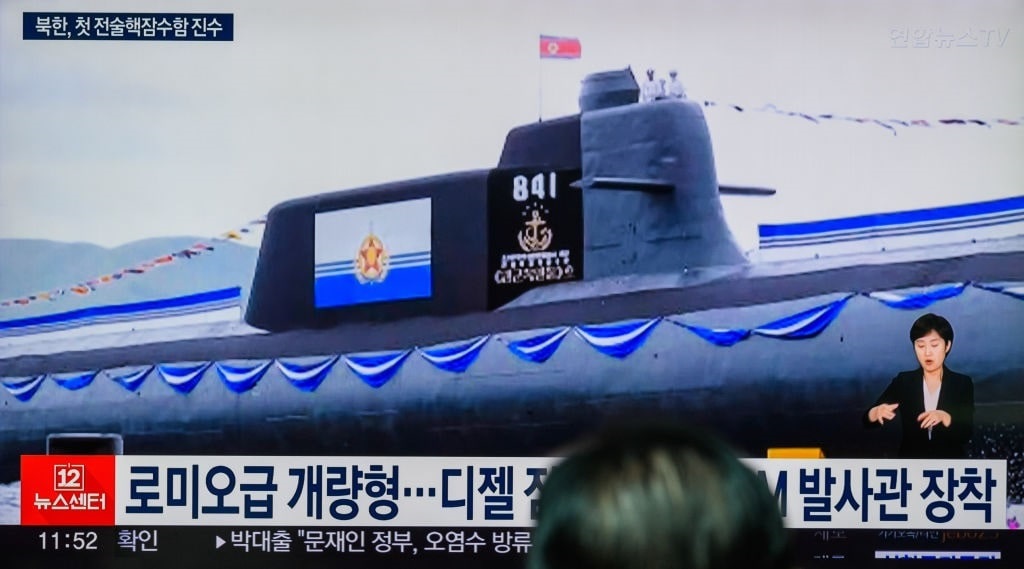In what observers of the Democratic People’s Republic of Korea (DPRK) military moves called strange, North Korea registered 13 submarines of its estimated 64-86 underwater vessels with the International Maritime Organization (IMO) on Aug. 27. The next day, all 13 were removed from the IMO’s Global Integrated Shipping Information System (GISIS). What is puzzling for analysts is that warships are normally not listed in the GISIS.
North Korea Seldom Explains Its Actions
When North Korea’s Supreme Leader Kim Jong Un senses his position in world affairs is being ignored, he foments geopolitical acting out. The DPRK may launch a flurry of long- and short-range missiles or execute artillery exercises close to the South Korean border. But understanding the machinations behind the military actions of Kim’s fiefdom has been difficult. Consequently, the sudden and inexplicable post of 13 submarines on the GISIS public international registry of commercial ocean vessels was as odd as its quick removal.
The 24-hour peek at the North Korean submarines brought to public scrutiny Kim’s large underwater capability. First to break the news of the public revelation of the DPRK’s underwater craft was the Voice of America (VOA), which observed:
“It is unclear what motivated Pyongyang’s initial registration of the submarines, which was first reported Tuesday [Aug.27] by VOA Korean. Besides the 11 Sang-O II-class submarines, Pyongyang registered the Yongung, which is capable of launching ballistic missiles, and the Hero Kim Kun Ok, which is believed to have the capability to carry nuclear-armed ballistic missiles. The Hero Kim Kun Ok was described by North Korea as its first operational ‘tactical nuclear attack submarine’ at a launch ceremony in September 2023 … “
The data revealed in the registry included assigning an IMO identification number, the flag under which vessels are registered, the type (Submarine), and the date built. There is nothing particularly noteworthy in the information other than it was there and then it wasn’t. According to an NTI (Nuclear Threat Initiative) assessment, North Korea’s 40 Sang-O II-class or “Shark-Class” submarines became operational in 2011 and are primarily coastal patrol vessels. NTI assessed, “Despite the size of North Korea’s submarine fleet, experts doubt that all of the country’s submarines are operational given the age of the vessels.”
The Hero Kim Kun Ok Number 841 is the newest of the DPRK submarines to be launched and is believed to be nuclear-ballistic-missile capable. “Analysts said the vessel appears to be a modified Soviet-era Romeo-class submarine, which North Korea acquired from China in the 1970s and began producing domestically. Its design, with 10 launch tube hatches, showed it was most likely armed with ballistic missiles and cruise missiles, analysts said,” according to Reuters. Although newly launched, the latest submarine is a derivative of 1970s technology, so it is not quite modern by submarine standards, is slow, and has a short range when submerged. North Korea has no nuclear-powered submarines; all are diesel-electric powered.
More DPRK Submarines Are in the Works
However, according to 38 North, a publication of the Stimson Center, a Washington, DC-based think tank providing in-depth analysis of North Korea, “Over the past few months, construction equipment and submarine components — including three hull sections and supportive jigs — have been brought into the shipyard. The first jig was observed on imagery from late December 2023, with two more present by mid-February 2024.” These activities are evidence of North Korea’s intense efforts to keep “in line with Kim Jong Un’s announced plans to bolster the size of the North’s submarine arsenal,” 38 North reported.
Though the DPRK’s submarine fleet is clearly growing, it is by no means as capable as modern submarines possessed by the United States and other Western navies. However, as Joseph Stalin observed, “Quantity has a quality all its own.” The threat represented by a large fleet of North Korean submarines increases an identifying and tracking challenge to the United States and its allies. Should the DPRK begin coordinating and integrating its newer subs with those of Russia and China, that would significantly increase the surveillance tasks of the West.
North Korea’s purpose for registering its 13 submarines with the IMO and immediately removing them is a mystery. Whatever the motivation, it snagged the attention of those keeping track of what Kim Jong Un is doing with his underwater craft. More eyes looking at North Korea’s military capabilities is good.
The views expressed are those of the author and not of any other affiliate.




